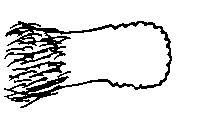Updated 6 Oct 2011
Side by Side Comparison
of the Stoneflies:
Both are bright green as live adults, but bleach to white in ethanol.

epiproct

epiproct

subgenital plate

subgenital plate
Updated 6 Oct 2011 |
|
Side by Side Comparison
|
|
| Alloperla pilosa | Alloperla thalia |
|---|---|
Both are bright green as live adults, but bleach to white in ethanol. |
|
| Adult abdomen striped | Adult abdomen plain |
 epiproct |
 epiproct |
 subgenital plate |
 subgenital plate |